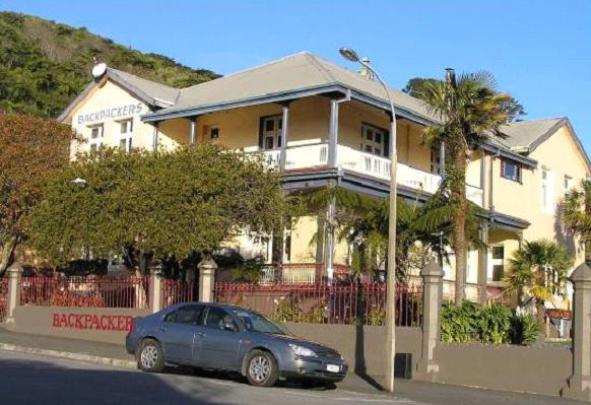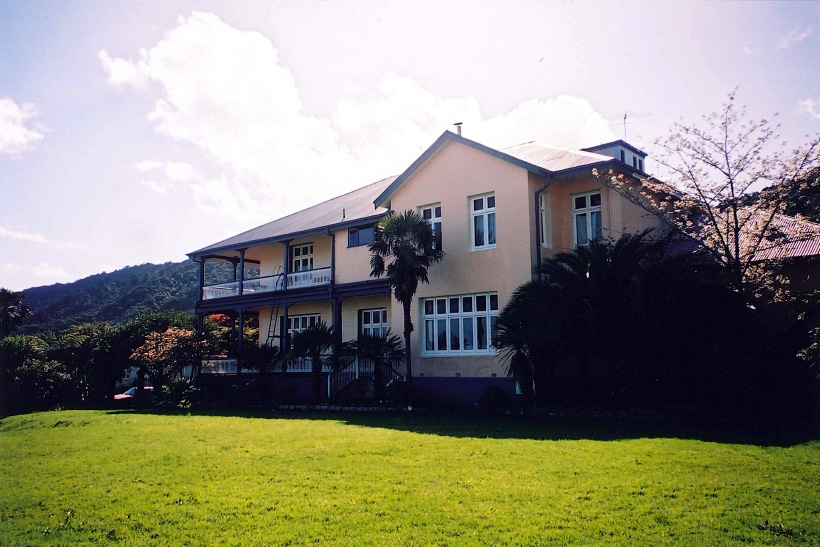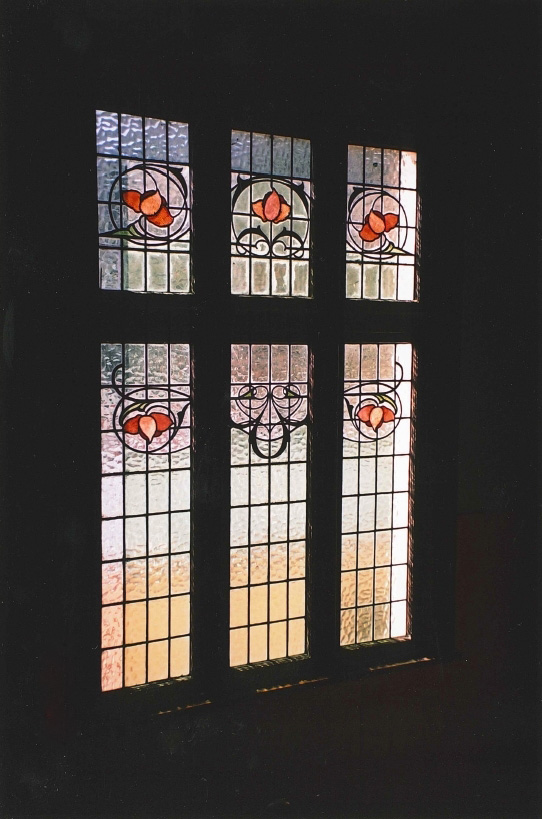St Patrick's Presbytery (Former) in Greymouth is part of a once expansive group of buildings that illustrated the strength of the Catholic Church in Greymouth and the surrounding district. A large and imposing building, it makes a distinctive contribution to the town centre's streetscape. The presbytery was built as the residence for the priests with offices, meeting rooms and accommodation for visitors. It is an example of the work of the prominent Christchurch architectural firm, Luttrell Brothers and was designed in 1914. Following the discovery of gold on the West Coast in 1864 miners flocked to the area. A great number of these, possibly over a quarter, were Irish Catholics and they were rapidly followed by priests to care for their spiritual needs. The first Catholic Church in Westland was St Mary's in Hokitika which opened in December 1865. (The present church replaced it in1914. ) St Patrick's Church in Ross, completed in 1866 is the oldest surviving church in Westland . In Greymouth the first Mass was celebrated in a store in 1864 and on 10 December 1865 a small timber church was completed, with a school alongside it. It was located near the river and was frequently flooded, the major flood of 1872 having a devastating impact on the developing town. With the education of Catholic children a priority, the Sisters of Mercy founded their Greymouth Convent in 1882. A decade later the first Marist Brothers also established a school here. Marist Brothers, a non-ordained religious group founded in France in 1836, had established a base in Australia and first sent three Brothers to set up a school in Wellington in 1876. Further Brothers, including New Zealanders, were trained in Sydney and they founded schools around New Zealand. The 1892 Greymouth school was the fifth educational institution they founded. The location of these schools was initially in rough timber buildings in various locations around the town's centre. By 1887, with support of a now substantial congregation, it was decided to build a church from more permanent materials. The esteemed architect Francis William Petre was chosen as designer of a concrete Gothic Revival style church on a more elevated site in Chapel Street. A large block of slightly elevated land was leased from the Maori owners, Mawhera Incorporation, and other buildings were soon clustered around the church. The importance of the Catholic Church in the community was demonstrated by the substantial and architecturally distinctive buildings which graced the town. The dominating landscape feature was the church with its tall spire and the large convent complex fronting Tainui Street made a major contribution to the impressive grouping. A significant addition to this group was the presbytery. When completed in 1914 it replaced an earlier building that had been described just seven years before as 'a fine presbytery'. Mainly responsible for initiating the construction of its replacement was the Very Reverend Dean Denis Patrick Carew, born Tipperary Ireland in 1849 and appointed the Greymouth parish priest in 1884. Christchurch architects Sidney (1872-1932) and Alfred (1865-1924) Luttrell who founded their Christchurch firm in 1902, designed the new presbytery and supervised its construction. Regarded as the unofficial architects for the Canterbury Catholic diocese, the Luttrell Brothers also designed the St Mary's Church in Hokitika about the same time. By this date they were highly regarded, undertaking many domestic as well as commercial commissions. This is an example of the middle range in size and grandeur of the houses they built. The opening ceremony was performed on Sunday, 15th March 1914 by His Lordship Bishop Grimes, Bishop of Christchurch. During his visit the Bishop also laid the foundation stone of the new Hokitika church. A newspaper report on the presbytery opening described it as follows: -a handsome brick building two storeys high. It covers a ground space 105ft by 50ft and contains twelve lofty rooms on each floor and under the apex of the roof is a large room 57ft by 20ft. Especial care has been taken to provide for ample ventilation. The interior wood-work is of beautiful marked rimu supplied by Stratford, Blair and Co's factory. The furniture is all strong and serviceable and meant for use and not for mere ornament. There is a large verandah in front of the building, and from a balcony a splendid view is obtainable. The whole of the additions to the church as well as the construction of the presbytery were carried out by Messrs Luttrell Bros, Christchurch, to whom every credit is due for the way they carried out their work. In addition to the parish priest, two or three curates lived in the presbytery. The female housekeeper might live in or out. Others who would stay there included visitors such as bishops, apprentice priests and relatives of the resident clergy. The parish was served by a number of notable priests apart from Very Reverend Dean Dennis Carew who served the parish from 1884 until 1917, a period of 33 years only exceeded by the Rt Rev, Monsignor James Long who was resident in the presbytery from 1921 to 1963. Another distinguished priest who later occupied the presbytery was Rt Rev Barry Jones, now the Bishop of Canterbury. During the 1950s there were usually two curates, but over the following decades with a declining congregation this was reduced until there was just one parish priest, covering a wider area. In 1989 the presbytery was sold because the decision had been made to build a new church on freehold land in High Street, some distance away. Having suffered earthquake damage, the structural condition of the adjacent nineteenth century church was considered beyond upgrading to meet current building codes as well as the parish's contemporary needs. This factor combined with increased costs for leasing the land and the fact that the parish centre no longer needed to be close to Greymouth's town centre. The church was demolished in 1994 after careful removal of a large stained glass window which has been included as a principal feature of the new building. A new presbytery stands alongside the church while the old building has been very well adapted for a compatible use as the Noah's Ark backpackers' hostel. The deserted convent building was demolished in the early 1990s, its steps remaining as part of the large new Polytechnic complex built on the site. A modern Catholic primary school building behind the former presbytery is a reminder of the strong Catholic focus this town block once had, while the many visitors to the hostel can enjoy the ambience of what was once the local priests' fine residence. The former presbytery is part of the once extensive Catholic precinct, which was dominated by St Patrick's Church, formerly sited alongside it. Registered Category I, the church was demolished in 1994. It was described in a contemporary report as 'an excellent specimen of the Gothic style of architecture, extremely beautiful both inside and outside'. Nearby was the convent. The primary school remains in modern buildings fronting Alexander Street. This wider historical and cultural complex once occupied most of the block and the Presbytery now remains as the dominating feature. The grouping illustrated the former strength of the Roman Catholic denomination in the district.



Location
List Entry Information
Overview
Detailed List Entry
Status
Listed
List Entry Status
Historic Place Category 2
Access
Private/No Public Access
List Number
1694
Date Entered
4th April 2008
Date of Effect
4th April 2008
City/District Council
Grey District
Region
West Coast Region
Extent of List Entry
Extent includes the land described as Lot 3 DP 2780 (RTs WS5B/497 and 159758), Westland Land District and the building known as St Patrick’s Presbytery (Former) thereon.
Legal description
Lot 3 DP 2780 (RTs WS5B/497 and 159758), Westland Land District
Stay up to date with Heritage this month
